Disclaimer: We sometimes use affiliate links in our content. For more information, visit our Disclaimer Page.
Are you an educator wrestling with the persistent issue of bullying in your elementary school? Peer mediation stands as a beacon of hope. This content delves into the core elements of effective peer mediation programs and the transformative impact they can have on addressing bullying. You’ll gain insights on training students in conflict management and negotiation skills, strategies for incorporating these practices within the classroom, and the common obstacles you might face. Engage with this content and you’ll not only enrich your approach but also empower students with the tools they need for lasting change.
Key Takeaways
- Peer mediation in schools can effectively reduce bullying and conflicts
- Training student mediators empowers them with skills for constructive conflict resolution
- Involving the school community reinforces the success of peer mediation programs
- Continuous assessment of peer mediation ensures adaptation to students’ evolving needs
- Tailored peer mediation strategies respect a school’s unique culture, enhancing effectiveness
Understanding Peer Mediation and Its Impact on Bullying
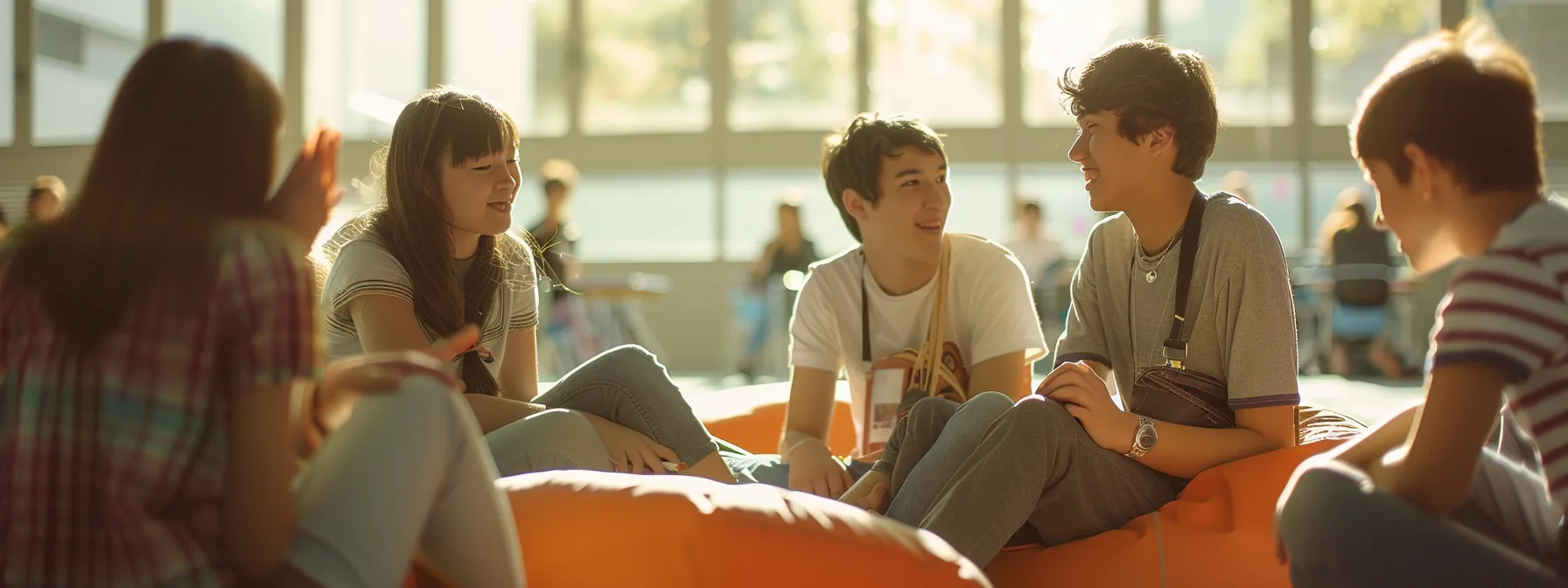
Peer mediation emerges as a transformative approach within the educational environment, targeting the resolution of conflicts, specifically bullying. As you learn how peer mediation operates in schools, you’ll grasp how it can redirect bullying behaviors towards more positive interactions. The benefits for students are multi-faceted, enhancing a culture of respect and decreasing incidents of conflict. Next, you’ll uncover the specific ways in which this preventative strategy not only uplifts individual students but also fosters a healthier, more supportive school climate for all.
The Concept of Peer Mediation in Schools
Peer mediation is a proactive method employed in educational settings, designed to address violence and promote conflict resolution among students. This process equips you with effective problem-solving skills, fostering a learning environment where assault and aggressive behaviors are systematically replaced with dialogue and understanding. By embracing these problem-solving techniques, you can play a central role in creating a safe and supportive atmosphere within your school.
Through first-hand involvement in peer mediation, you’ll witness its powerful impact: reduced conflicts and a decline in bullying incidents. Such experiences reinforce the concept that direct communication and negotiation are the keys to resolving disputes before they escalate. To illustrate the journey from confrontation to resolution through peer mediation, consider the following steps:
- Identifying the root of the conflict;
- Facilitating a respectful dialogue between the parties involved;
- Guiding peers towards a mutually agreeable solution.
How Peer Mediation Addresses Bullying Behaviors
Your school’s peer mediation policy can be a strong deterrent against harassment. By focusing on early attention to bullying behaviors, peer mediators encourage those involved to voice their concerns and fears in a controlled environment. This process allows for empathetic listening and promotes the understanding that all parties’ viewpoints are valid.
In situations where bullying occurs, peer mediation serves as a bridge to compromise, steering both the aggressor and the victim towards a peaceful resolution. This strategy not only reduces the immediate tension but also equips you with the ability to manage future conflicts, showcasing the lasting value of peer mediation in curbing fear and promoting respect.
- Early identification of bullying incidents and attention to harassment;
- Creation of a safe space for open communication, dispelling fear;
- Encouragement of empathy and compromise to resolve conflicts.
Benefits of Peer Mediation for Students and School Climate
When your school adopts peer mediation policies, the wider school climate begins to shift. The practice strengthens the school’s code of conduct by emphasizing responsible behavior and reducing social exclusion. As a student, you can contribute to this positive transformation, supporting efforts that make the educational setting more inclusive and safe for everyone.
Should you encounter conflict, engaging with a school counselor or a parent can facilitate the peer mediation process. This collaboration not only resolves individual disputes but also nurtures a proactive communication culture, which, in turn, makes for a more harmonious school environment. Improved relationships among students signify the lasting benefits of these strategies.
Peer mediation turns the tide against bullying, a simple yet robust approach. Let’s now examine the core components that make such programs succeed.
Essential Elements of Effective Peer Mediation Programs
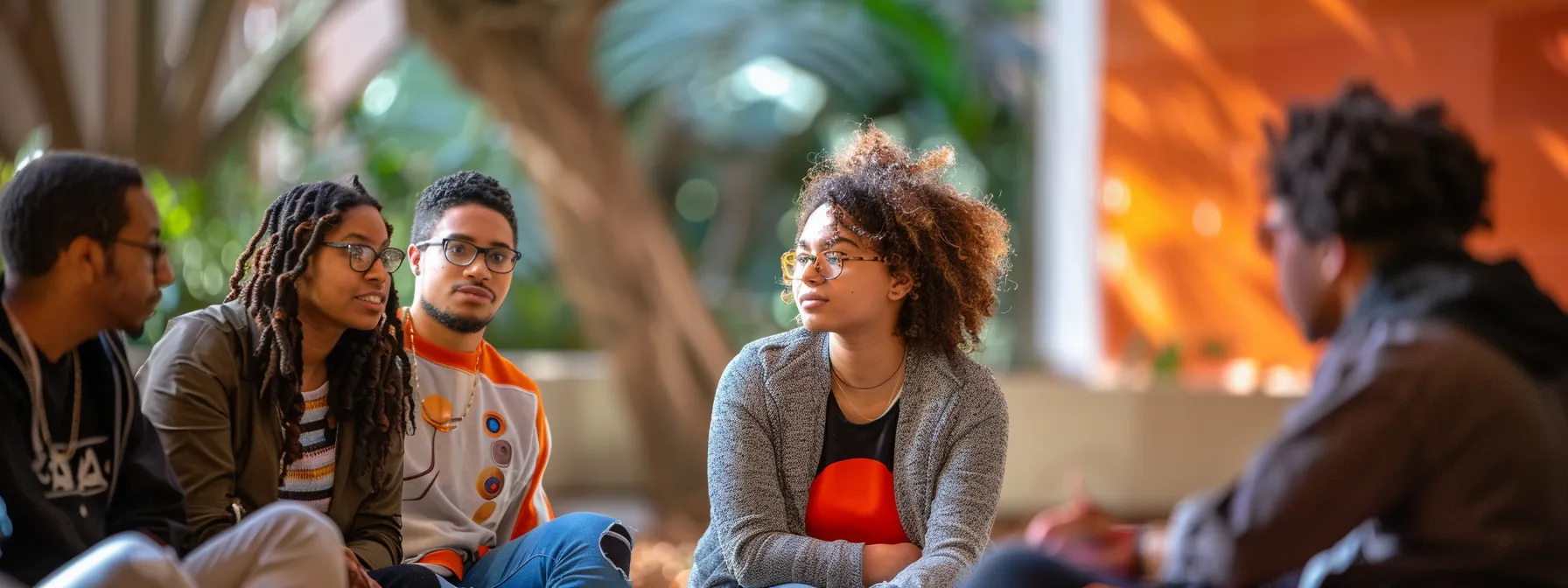
To effectively mitigate bullying and foster positive interpersonal relationships, an effective peer mediation program within your school is crucial. This initiative hinges on three core components: the careful selection and comprehensive training of student mediators, the establishment of clear mediation procedures, and the meaningful involvement of parents and community members. Each plays a pivotal role in achieving the goal of a safer, more empathetic educational experience, reducing anxiety and potentially even substance abuse linked with negative peer interactions. As we delve deeper, you will understand how each element contributes to the overarching success of peer mediation strategies.
Selecting and Training Student Mediators
Choosing the right student mediators is paramount in your school’s battle against bullying and peer victimization. These individuals should exemplify empathy, possess strong communication skills, and have the respect of their community. By selecting youth who are seen as allies and leaders, your school sets the stage for an effective mediation program, one that addresses aggression in a manner that resonates with and is respected by fellow students.
Training is equally critical; it empowers your chosen mediators with the skills to tackle sensitive issues such as bullying effectively. A comprehensive training program will involve role-play scenarios, conflict resolution techniques, and sessions on the psychology of aggression, equipping student mediators with actionable insights. This preparation ensures they can guide their peers towards non-violent, constructive solutions, fostering a compassionate and safe school environment for all.
Establishing Clear Mediation Procedures
To seamlessly integrate peer mediation into your middle school’s anti-bullying strategy, establishing clear procedures is a must. These should include a well-defined questionnaire to assess the needs of all parties involved, ensuring the sustainability and effectiveness of the program. Effective management of the mediation process, from initiation to resolution, not only addresses anger and other strong emotions head-on but also ensures that every student feels heard and valued.
Making the program widely accessible and understood among the student body is crucial for its success. When you’re seeking help, you’ll find the steps to access a mediator are simple, which is fundamental in moments of distress. These protocols provide a reliable platform for students to navigate through conflict, transforming potential hostility into opportunities for growth and understanding:
Involving Parents and Community Members
Engaging parents and community members is crucial in the effective implementation of peer mediation programs focused on bullying prevention. Including these stakeholders ensures that the data on behavioral trends and the health of the school climate is shared, promoting a collaborative approach to conflict resolution. Their involvement not only fosters a stronger understanding of gender-related dynamics and language use among students but can also inform the curriculum, helping to develop a more holistic educational experience that addresses real-world issues.
When parents and members of the community are meaningfully engaged, you gain access to a wider range of perspectives and resources. These contributions can provide fresh insights into creating a nurturing school environment that reflects diverse backgrounds and experiences, which, after all, is key to fostering an inclusive and safe learning space. Practical examples of their involvement might include workshops on communication skills or support in developing peer mediation outreach programs:
With the framework of a peer mediation program in place, the stage is set for action. The next step is to sculpt students into adept mediators, equipping them with skills to navigate the subtle complexities of conflict resolution.
Training Student Mediators for Success
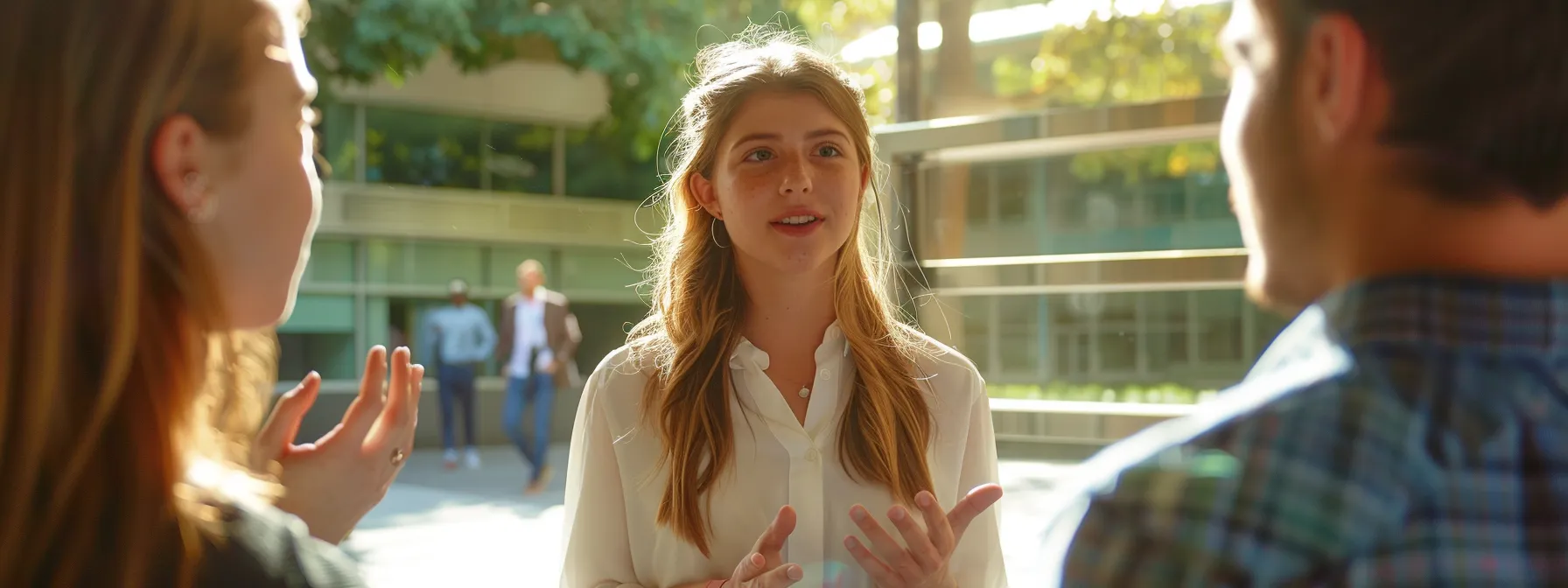
Successfully training student mediators is a decisive step in employing peer mediation to combat bullying. As you engage in developing your communication and conflict resolution skills, you’ll build the empathy required to mediate effectively. Participating in role-playing scenarios will boost your confidence as a mediator, equipping you to handle real-life situations with knowledge and care. Beyond the foundational training, ongoing support and guidance from teachers and mediation experts are essential for maintaining the program’s integrity. This ongoing development enhances your ability to address abuse and manage conflicts within your school, reinforcing the trust and respect between students.
Developing Communication and Conflict Resolution Skills
As student mediators, developing robust communication skills is critical, particularly when you encounter complex interpersonal conflicts or cyberbullying. Dan Olweus, a pioneer in bullying research, offers compelling statistics that highlight the need for dialogue and empathy in intervention strategies. By honing your ability to listen actively and manage reactions, you foster a climate where anger management and understanding become the cornerstones of bullying prevention.
In crafting your role as a mediator, it’s imperative to grasp the nuances of conflict resolution. Practical exercises designed to navigate the intricacies of student disagreements equip you with the tactics necessary to dissolve tension and advocate for a peaceful resolution. As you refine these skills, you become adept at addressing the root causes of bullying, ensuring that every student’s voice is heard and valued within your learning community.
Role-Playing Scenarios to Build Confidence
Engaging in role-playing scenarios, you gain a practical understanding of how to manage strong emotions that may arise from issues like mental health concerns, evaluation disputes, or physical abuse allegations. These simulations help you to recognize and respond to various conflict scenarios, enhancing not just your confidence but also your capability to mediate effectively. You will learn to navigate these sensitive situations with tact and a restorative mindset, championing constructive conversations over confrontations.
By rehearsing real-life peer mediation processes, your insights into the emotional backdrop of bullying become sharper, informing your approach towards empathetic intervention. You’ll understand how to perform a balanced evaluation of each case, discerning the best path to resolution while mitigating potential damage to mental health. This hands-on experience serves as vital preparation, fostering your growth into a capable mediator skilled at diffusing the tensions surrounding physical abuse and emotional distress within your school community.
Providing Ongoing Support and Guidance
Effective peer mediation goes beyond initial training, requiring an infrastructure of sustained backing and mentorship to ensure long-term success in bullying prevention. As you engage with complex student conflicts, it’s imperative to have access to ongoing educational resources and guidance from experienced professionals. These support systems enable you to continuously improve your mediation skill set, focusing on effective intervention and resolution strategies within your school community.
Your role in fostering a safer school environment is greatly enhanced by regular feedback sessions and advanced training modules that address evolving bullying trends. By participating in these continuous learning opportunities, you can keep your mediation techniques current and impactful. This constant evolution of practice and knowledge reinforces your capability to manage disputes with sensitivity and expert finesse, shaping a respectful and understanding school atmosphere for all students.
Now, equipped with the fundamentals, your students are ready. Let them put knowledge into practice and witness the transformation in the classroom dynamics.
Implementing Peer Mediation Strategies in the Classroom
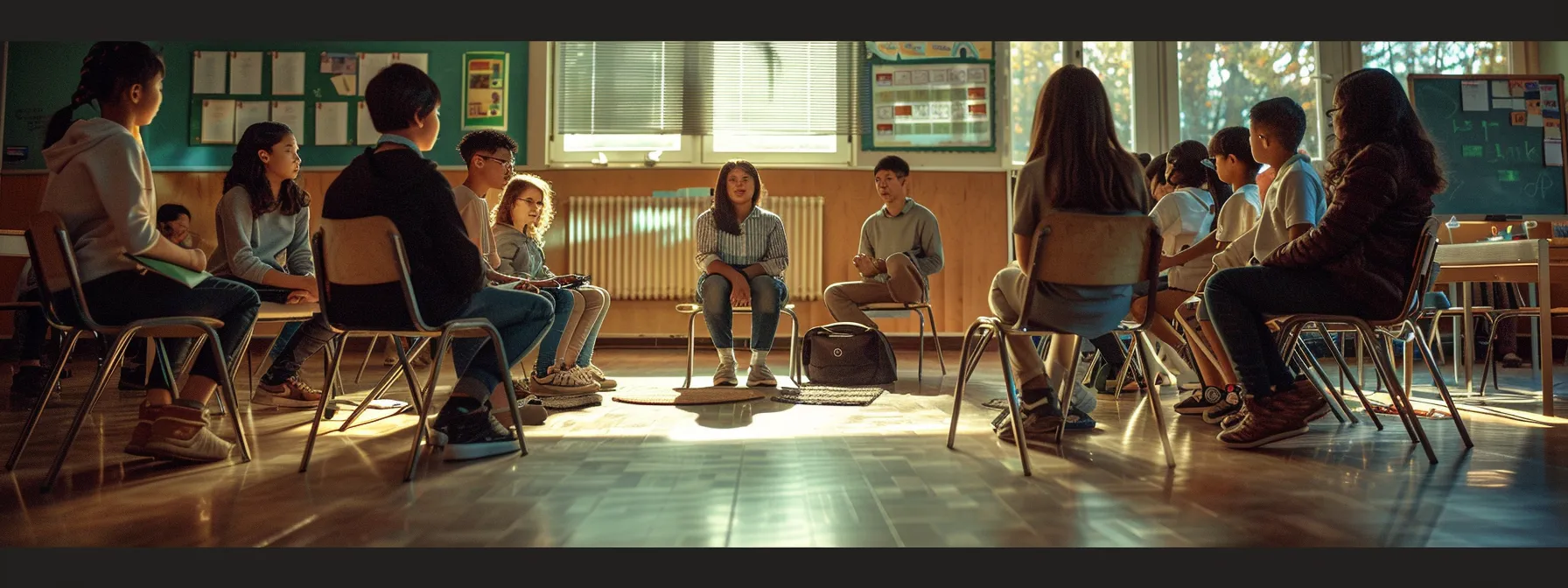
Implementing peer mediation strategies within the classroom is a critical step toward mitigating bullying effectively. You’ll learn how to weave these practices into daily activities, ensuring they become a natural part of student interactions. Encouraging student participation and ownership is fundamental, as it empowers your peers to take active roles in maintaining a positive school culture. Additionally, continuous monitoring of progress and thorough assessment of outcomes are necessary to measure the effectiveness of these strategies. Together, these steps create a dynamic environment where respect and understanding thrive.
Integrating Mediation Practices Into Daily Activities
Integrating mediation practices into classroom activities starts with fostering open communication and the constructive resolution of conflicts as part of your daily routine. By encouraging you and your classmates to resolve disputes through peer mediation, your school nurtures essential life skills such as empathy, listening, and collaborative problem-solving. Embrace these principles, and witness how the interpersonal dynamics in your classroom change, leading to a more cohesive and supportive learning environment.
Your instructors can embed mediation principles in various classroom scenarios, from group projects to classroom discussions, ensuring these practices are not isolated events but a natural part of school culture. As you regularly participate in these exercises, you’ll become adept at identifying and addressing issues proactively, reducing incidents of bullying and cultivating a space where every student feels valued and heard.
Encouraging Student Participation and Ownership
Encouraging you as a student to partake in peer mediation initiatives is central to the program’s success. By involving you from the outset, your school can ensure a sense of responsibility and personal investment in bullying prevention. This participation not only empowers you but also leads to sustainable behavioral changes among your peers, strengthening the social fabric of your classroom and school.
Ownership in the peer mediation process instills within you the capacity to address conflicts directly and respectfully. Your active engagement leads to organic implementation of bullying prevention strategies, promoting a more harmonious classroom dynamic. Take this opportunity to be part of solution-oriented dialogue:
Monitoring Progress and Assessing Outcomes
Monitoring the progress of your school’s peer mediation program is crucial for identifying its strengths and areas for improvement. By regularly reviewing the outcomes, your school can tailor the initiative to better serve the needs of the student body, effectively lowering bullying rates and enhancing overall school climate. This critical evaluation enables you to see how your involvement is making a tangible difference, emphasizing the value of your participation in fostering a safer and more supportive educational environment.
Assessing the outcomes of peer mediation involves collecting feedback from you and your peers, as well as from faculty and parents, to gauge the program’s effectiveness. When you share insights from your experiences, it helps to refine the program and ensures it remains responsive to changing dynamics within the school. This ongoing assessment creates a feedback loop that maintains the program’s relevance and efficacy, directly contributing to a notable reduction in bullying incidents and an improvement in peer relations.
Effective peer mediation can transform a classroom, building bridges where walls once stood. As with all endeavors, we must now face the inevitable challenges, readying ourselves for the refined art of troubleshooting these programs.
Addressing Challenges in Peer Mediation Programs

While peer mediation serves as a promising method for bullying prevention, implementing these strategies can encounter several obstacles. You’ll need to navigate overcoming resistance from staff or students, a crucial step in gaining program acceptance. Ensuring confidentiality and neutrality remains imperative for participants’ trust in the process. Moreover, adapting peer mediation to the unique fabric of diverse school settings will be essential for broad-based effectiveness. Let’s explore practical ways to address these challenges and strengthen the impact of peer mediation on your school’s culture.
Overcoming Resistance From Staff or Students
Understanding that some staff and students may hold reservations about peer mediation’s impact on bullying prevention is key. To overcome this reticence, you ought to engage them in conversations that highlight the empirically backed benefits of such programs. Emphasizing the program’s potential to reduce disciplinary issues and improve the learning environment can pave the way for broader acceptance within your school.
Should you encounter skepticism among peers or educators, it’s beneficial to draw on success stories from other schools where peer mediation has thrived. Presenting case studies and statistics that showcase a drop in bullying incidents as a direct result of mediation can cement confidence in the program. Bringing this evidence into discussions can spark a shift in perception, inching the school community closer to embracing these strategies for bullying prevention.
Ensuring Confidentiality and Neutrality
In handling bullying through peer mediation, your program must uphold confidentiality to maintain trust among all participants. You need to be assured that the details of the mediation won’t be shared beyond the necessary parties, which is a fundamental aspect for a successful resolution. The strict adherence to confidentiality ensures that you can freely express your concerns without fear, allowing for a genuine and productive dialogue.
Alongside confidentiality, the neutrality of the mediators is non-negotiable to ensure a fair process for everyone involved. As you engage in mediation, you expect an unbiased facilitator who can guide the discussion without favoritism or preconceived notions. This impartial stance is critical, as it helps you feel secure in the knowledge that the outcome of the mediation will be focused solely on the best interests of those involved, facilitating an environment conducive to healing and resolution.
Adapting Strategies to Diverse School Settings
Adapting peer mediation strategies to cater to the unique cultural, social, and economic landscapes of diverse school settings is crucial. When you consider the specific challenges and needs of your school’s demographic, it allows for the creation of tailored programs that resonate more profoundly with the student body. Customizing approaches to bullying prevention ensures that peer mediation is not only relevant but also embraced by your entire school community, leading to more effective outcomes.
Understanding that every school has its own set of values and norms helps you to foster a peer mediation program that respects and leverages these differences. As a result, you provide an inclusive platform for conflict resolution, one which ensures that all students, regardless of background, find a voice in the mediation process. Such thoughtful adaptations contribute significantly to the overarching goal of nurturing a respectful, safe, and supportive school environment where bullying is effectively mitigated.
Facing challenges head-on, students are rewriting their narratives through peer mediation. Let’s witness these triumphs in their own indomitable words.
Real-Life Success Stories of Peer Mediation
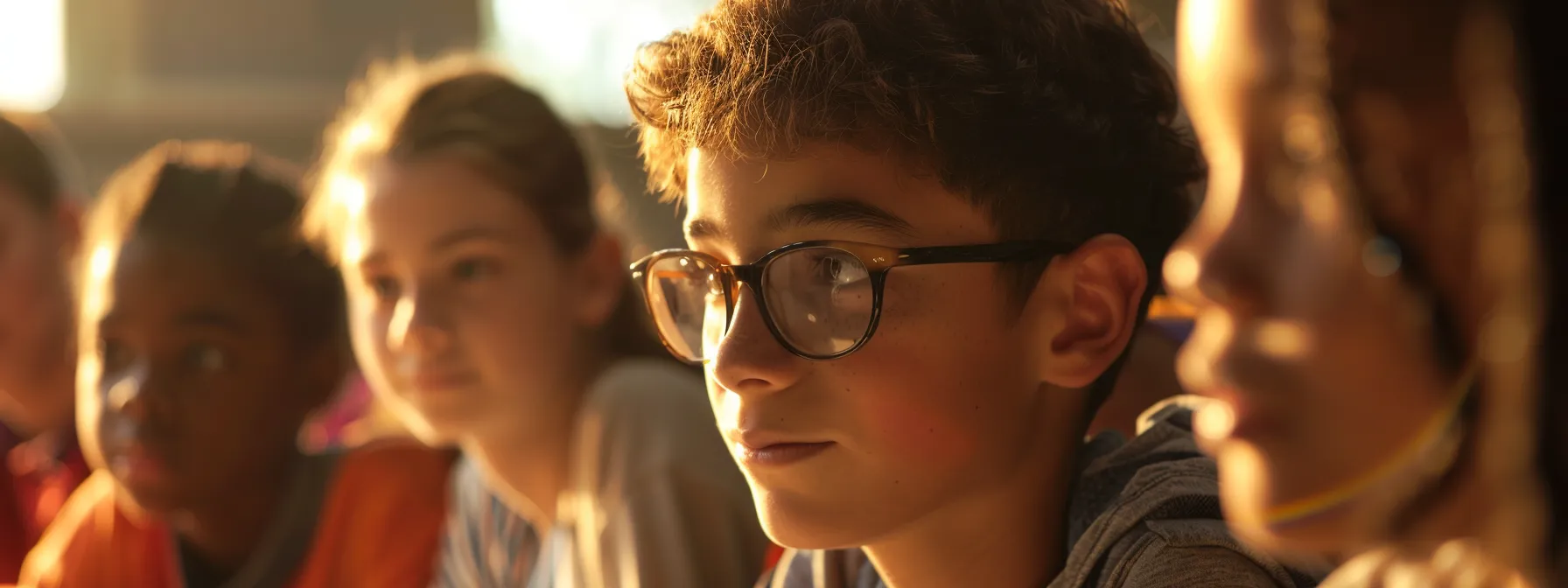
Exploring real-life success stories illuminates the effectiveness of peer mediation in preventing bullying. A case study of Lincoln Middle School reveals a significant drop in bullying incidents thanks to its peer mediation program. By examining the key tactics from successful initiatives, you’ll gain practical knowledge. If you’re considering implementing peer mediation in your school, these tips and insights will provide a solid starting point for fostering a safer learning environment.
Case Study: Reducing Bullying Incidents at Lincoln Middle School
At Lincoln Middle School, the introduction of a well-structured peer mediation program led to a significant reduction in bullying incidents. By training students to facilitate conflict resolution, they created a safer, more supportive school environment where issues were handled promptly and effectively. This case demonstrates that when you empower your peers with the right tools, a noticeable change can occur, fostering a climate of respect and understanding.
In this case, you can see that an important aspect of Lincoln Middle School’s success was the active involvement of the student body in the mediation process. Their hands-on approach encouraged personal responsibility and helped students develop key skills in communication and empathy, which are critical in preventing bullying. Such initiatives can serve as an inspiration if you’re looking to enhance the social dynamics within your own school community.
Lessons Learned From Successful Programs
Through examining the achievements of successful peer mediation programs, a key takeaway is the importance of ongoing mediator training and development. Your peers need continuous skill enhancement to address evolving forms of bullying effectively, including cyberbullying. This commitment to professional growth ensures you are equipped with the most current strategies to support a positive school environment.
Another lesson learned is that your active participation in shaping the mediation program significantly increases its success. By taking ownership, you ensure the program addresses the specific nuances of your school’s culture, making the prevention strategies more effective and personally relevant. It’s through this sense of empowerment and relevance that peer mediation becomes a strong pillar for bullying prevention in schools.
Tips for Starting a Peer Mediation Program in Your School
To launch a peer mediation program at your school, start by securing support from school leaders and stakeholders who understand the role of peer mediation in bullying prevention. Your initiative will stand a stronger chance of success if you have a committed team, including faculty and administrators, who believe in the process and the potential for improving the school environment. This coalition should work together to define the program’s objectives, resources needed, and the desired outcomes for bullying reduction.
Next, focus on identifying and training a group of student mediators who reflect the diversity and values of your school community. These students should be approachable, possess good communication skills, and exhibit a genuine desire to help their peers. Comprehensive training in conflict resolution, active listening, and mediation ethics will lay the foundation for their success as neutral facilitators. With a well-trained team, you will be well-equipped to handle bullying incidents with sensitivity and promote a culture of respect.
Conclusion
Effective peer mediation equips students with essential problem-solving skills, reducing bullying and encouraging a culture of empathy and respect. The success of these programs hinges on thoughtful integration into school activities, regular training of mediators, and active student participation. Ongoing support ensures the strategies evolve with students’ needs, maintaining their effectiveness in diverse school environments. Peer mediation’s significant role in bullying prevention underlines its value in creating safer, more inclusive educational spaces.





